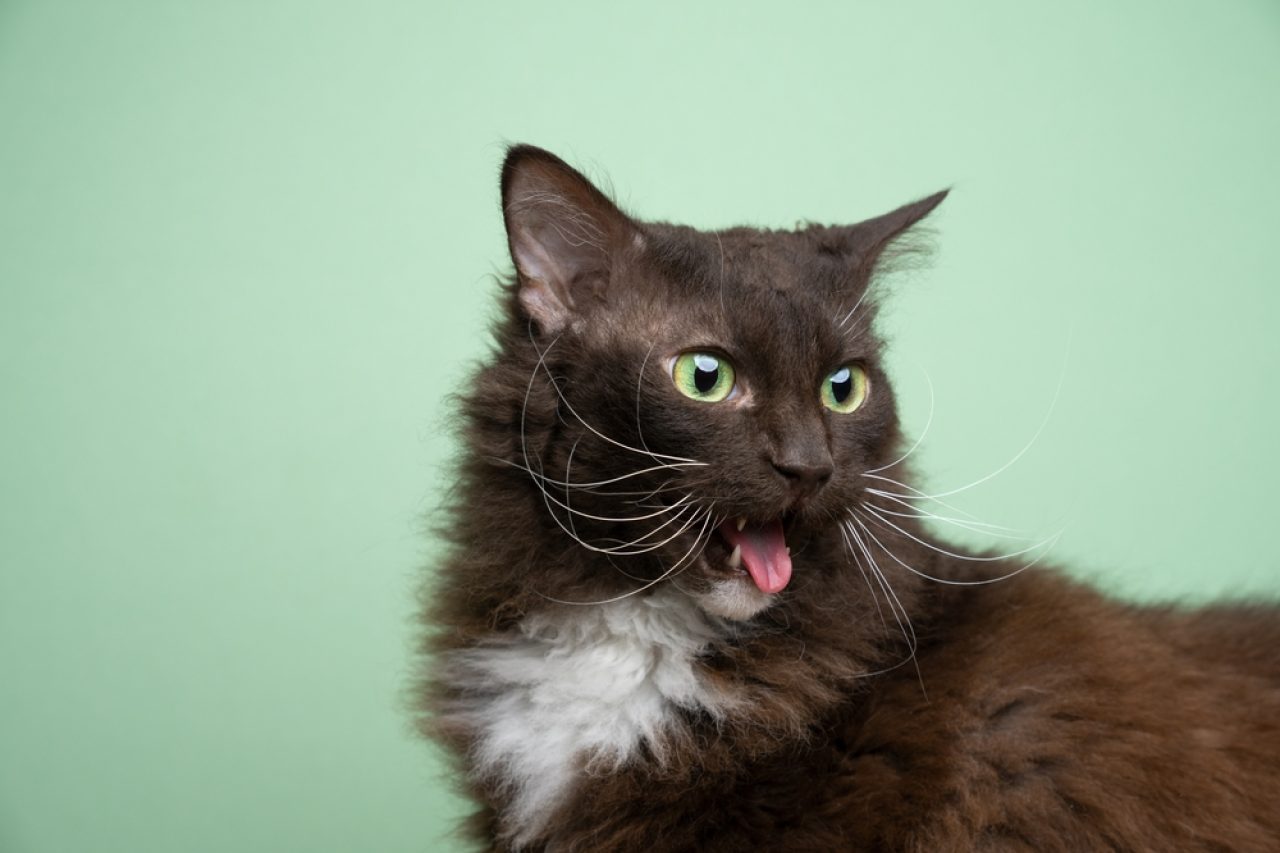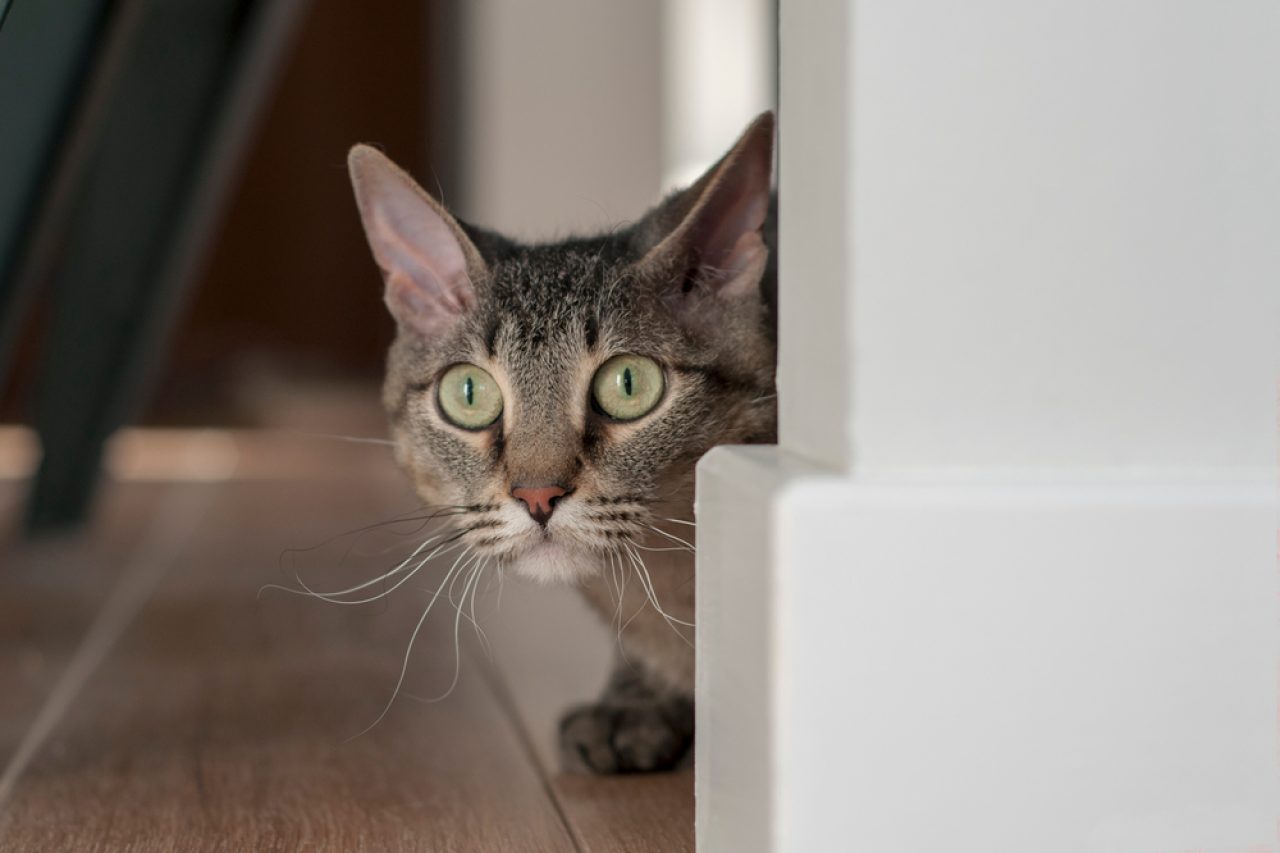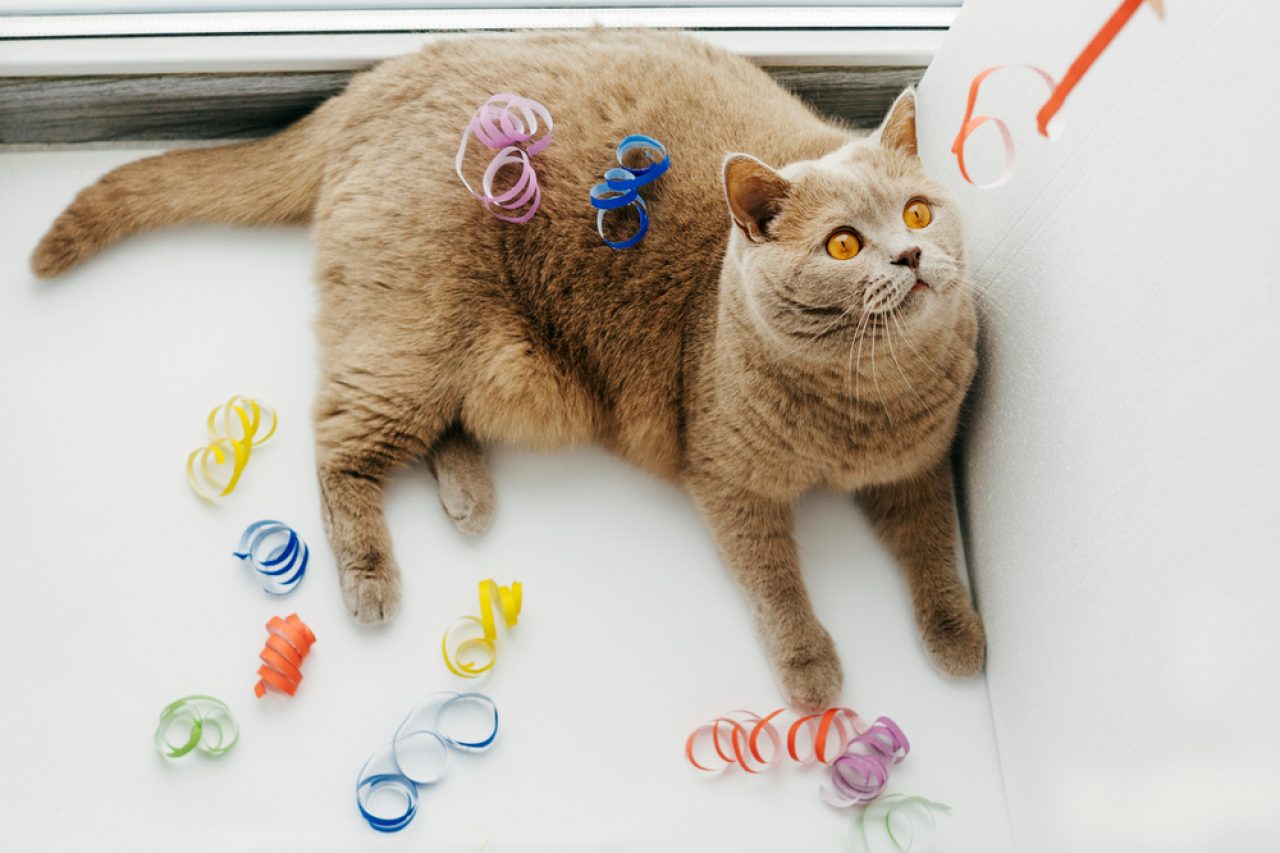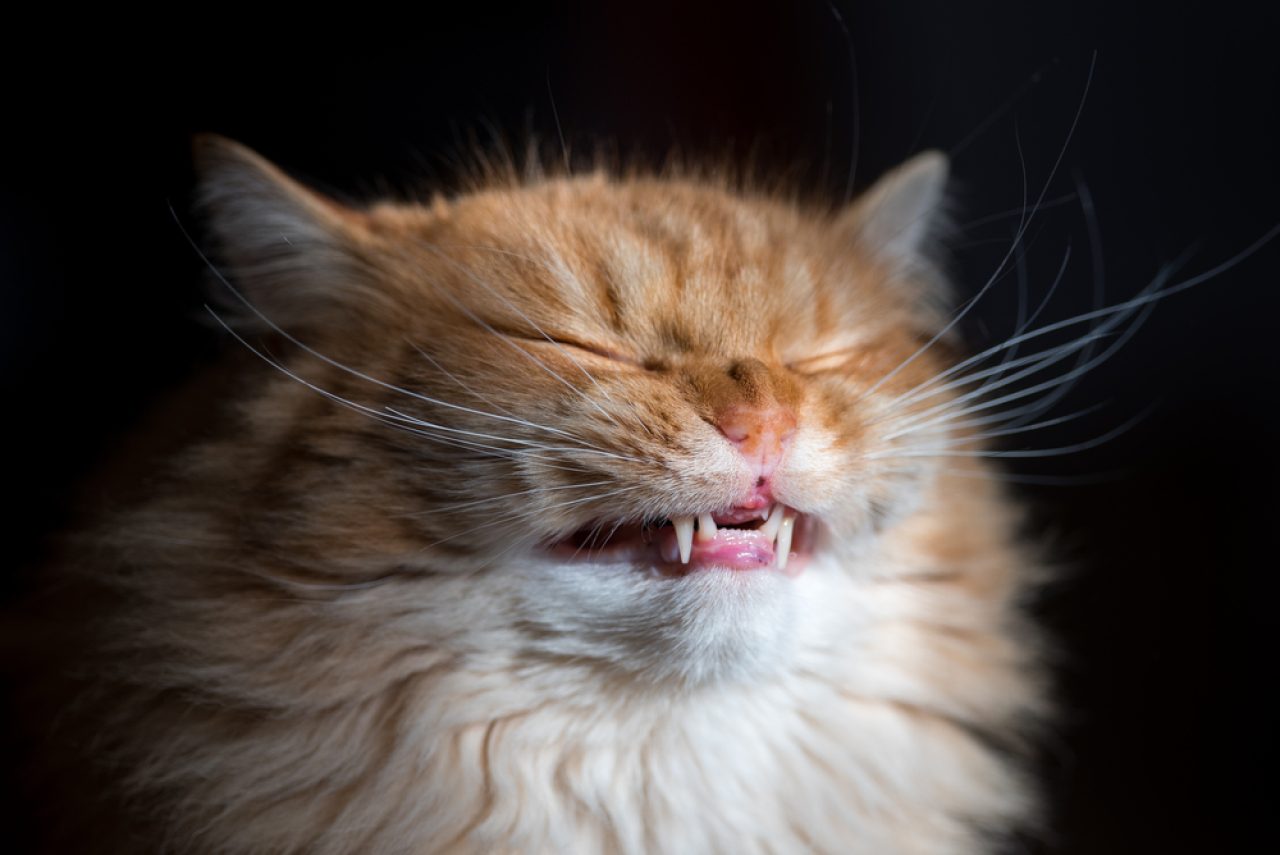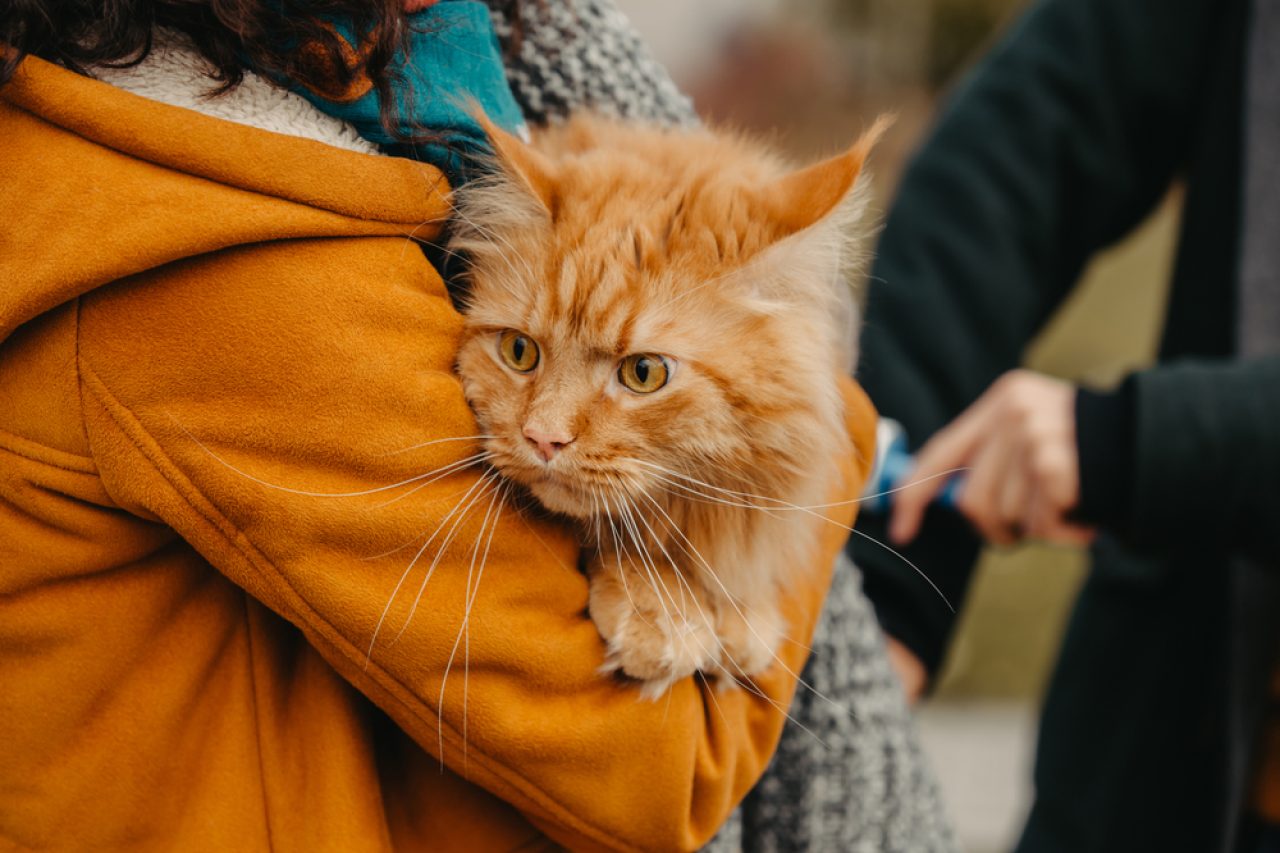📖 Table of Content:
It’s a cold and rainy night and you’re warming up on the sofa. You’re wrapped up in your favorite blanket, sipping some hot chocolate. There’s only one thing that could make this better, so you call your fuzzy little companion over for some snuggles. You pick her up, and what’s that? Curly cat whiskers?!
You could’ve sworn your kitty had normal, straight whiskers. “Wait, should cats even have curly whiskers? Are they just rare or is there something wrong?!” It’s completely okay to be surprised when you first come across whiskers like that. After all, we’re so used to seeing them straight.
So, what’s the deal then? Why does your cat have this unusual trait? Well, you shouldn’t worry because there are many reasons why a cat might look like that. Before we dive into them, let’s figure out why do cats have whiskers anyway?
What are whiskers for?
Whiskers are such an iconic part of a feline. I’m pretty sure none of us left them out when drawing a cat as a kid. I always made sure to make them extra long and majestic. (Never drew curly cat whiskers, though!) But I never thought about what they’re used for. Or why they’re positioned where they are.
Are they just for show or do they serve a purpose? Is there any difference between regular fur and whiskers? Are they antennas they use to communicate with their alien cat overlords? So many questions and luckily there’s an answer for all of them! Well, except the alien one…
1. Anatomy of a whisker
Another term for whiskers is tactile hairs. They are very thick and their roots are set much deeper than regular fur. The roots are surrounded by blood vessels and nerve endings that connect the hairs to the brain.
At the end of a hair is a proprioceptor. It’s a special sensory organ that sends body-related messages to the brain. With its help, a cat is able to keep track of her position and movements. In other words, it helps a cat use her whiskers like receptors of her surroundings.
Though when we think of whiskers, we imagine the muzzle, you can find these hairs in other places too. They’re placed above the eyes, along the chin and jaw, and even on the backs of their legs. And they all have the same function! So, what is that exactly?
2. The purrpose of whiskers
As I already stated, these hairs help cats take in information from their surroundings. They detect air currents or objects a cat touches and then vibrate. The vibration gets sent down into the follicle and then to the brain. This helps a cat keep her balance and move without problems.
Felines and some other animals evolved to have whiskers mainly because of hunting. While focusing their eyes and other senses on their prey, their little facial hairs help them navigate their surroundings. This keeps them from bumping into things and helps them sense possible threats.
But how does this affect housecats? They have no need to hunt, but whiskers still play a huge role in their lives. They help your kitty keep her balance and judge the distance between objects when jumping. Whiskers tend to be the same size as the width of her body. So, they also tell her if she can fit into a tight space or not!
Though as so many funny cat videos prove, some cats are just clumsy. Their whiskers might have judged the distance between your sofa and armchair perfectly. However, your precious feline is still a hilarious little klutz.
3. Mood readers
Did you know that whiskers can also help you read your cat’s mood? No, curly cat whiskers don’t mean your kitty is spiraling into love with no return. But their position can tell you quite a lot. Of course, you should always look at your feline as a whole, not just her tactile hair. But, they can be useful!
For example, when they’re relaxed, and off to the sides, that’s a happy cat. If they’re pointing backward, she might be anxious or afraid. Whiskers turned forward means she’s curious about something. Reading your kitty’s mood can be easy when you pay attention to her tactile hair and body language!
Why do curly cat whiskers exist?
Now that you know what they’re for, it’s about time to find the solution to this mystery. Why do curly cat whiskers even exist?! Well, there are a few possible answers as to why your cat might have this trait. And checking their breed might reveal the simplest one!
1. Curly cats
There are some feline breeds that naturally have curly fur. Although it’s not necessary for them to have curled whiskers, it does occur. More often than not, actually! And even if your cat doesn’t have curly hair, her whiskers might still be genetic.
You might want to check if your kitty has any of these breeds as ancestors: LaPerm, Selkirk Rex, Devon Rex, Cornish Rex, Skookum, Tennessee Rex.
2. Aging
One of the most common reasons for curly cat whiskers is aging. As your little fuzzball gets older, her whiskers will probably start curling. This might be due to her rubbing her face or eyes too much which can damage her tactile hair.
While the curling shouldn’t worry you, you should pay attention to how much your cat rubs her eyes. It might be a sign of her eyesight going bad. If this is the case, you should consider taking her to the vet. The whiskers will also most likely curl before falling out to make room for new ones.
3. Can’t beat the heat
Sometimes your kitty with perfectly straight whiskers might want to change things up. So, she goes looking for a curling iron. Only, it’s hard to get one to work when you have no thumbs. The next best thing? Heaters and candles. (We all know cats love sunlight and warmth but really?!)
If your feline got a bit too close to the flame, it’s very likely her tactile hair got damaged. Not to worry though, the curly cat whiskers will fall out and new ones will grow. Just be careful and don’t allow your furball any more makeovers.
4. A sign of stress?
An important thing to take notice of is “whisker fatigue” or “whisker stress.” If you own a cat with no curly relatives, and that hasn’t been around anything hot, pay attention to her surroundings. Is her water or food bowl too small? Does she rub her head against her bedding too much?
These are all things you may not have noticed, but they’re affecting your feline’s whiskers. Rubbing against furniture or their own things causes stress to the tactile hairs. This causes them to curl and eventually fall out.
The best way to stop this from happening is to buy a shallow and wide bowl. As for the rubbing on furniture, it’s always best to consult a veterinarian. He’ll be able to provide you with the best solutions and care for your furball.
A few things to bear in mind:
Curly cat whiskers aren’t dangerous
Despite tactile hairs being so important for cats, their curling really isn’t a big deal. It’s a completely normal process that will probably happen to almost any cat. So, if you do see some curly cat whiskers, there’s no need to be afraid.
The best choice of action is to always consult a veterinarian, just to be safe. And if he finds no health issues, just let the whiskers do their own thing. They will fall out eventually, so just be patient and don’t try to rush things. One of the worst mistakes a cat owner can make is cutting them off.
Don’t even think about cutting them
So, you’ve learned that new whiskers grow after the curly ones fall out. You want to help your fuzzball, so you decide to cut them off. It might seem like a totally logical thing to do, but it will cause more harm than good.
We explained just how important whiskers are for cats. They are basically another set of eyes for them. That’s why cutting them off would be like blinding them. Your poor feline would become almost completely disoriented.
Whiskers are extremely sensitive, so you always need to be careful with how you handle your cat. Don’t squish her face (as tempting as it is) and avoid touching the tactile hairs. I know it’s easy to get carried away when snuggling her but try to have her health in mind.
And as for curly cat whiskers, who would want to cut them anyway? If they’re not causing a problem, why get rid of such a cute attribute? When your furball gets curly tactile hairs, just sit back and enjoy them while they last. Chances are, they’ll disappear on their own sooner than you think.
So, how cool are curly cat whiskers?
Tactile hairs are a pretty neat thing for cats. It’s hard to imagine felines without their little mustaches. And it would be even harder for them to live without them. It’s incredible how much some small hairs on a kitty’s face and legs can contribute to her existence.
Tactile hairs are like a kitty superpower, so when we see curly cat whiskers, we think they’re losing that power. Thankfully, the power stays the same and you get yourself one funky cat! The damage doesn’t last very long, and you soon get your old furball back.
Unless you own an already curly feline. In that case, you might be so lucky to always have those beautiful curls around. Either way, there’s no denying that curly cat whiskers might just be one of the coolest feline traits out there!

